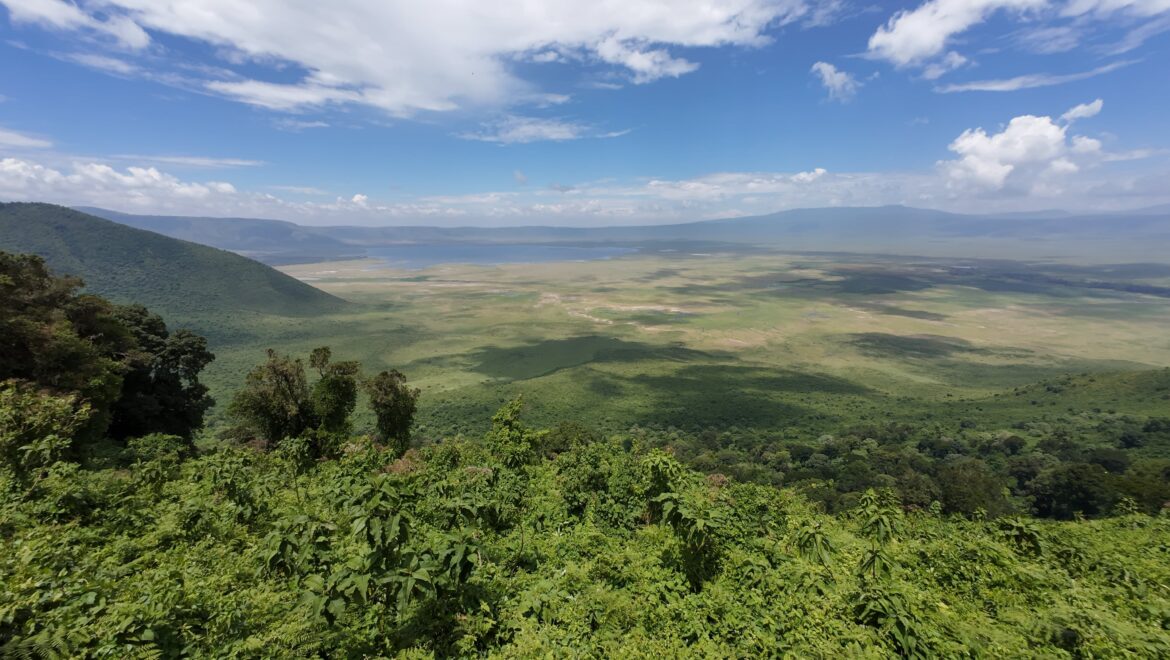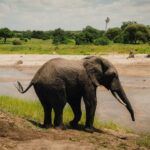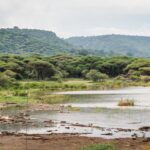The Ngorongoro Conservation Area is a unique protected region in northern Tanzania, known for its diverse wildlife, stunning landscapes, and rich history. It is home to the Ngorongoro Crater, the world’s largest inactive, intact volcanic caldera, which supports many animals, including the Big Five: lions, elephants, buffaloes, leopards, and rhinos.
The area is a UNESCO World Heritage Site and is distinct because it allows wildlife conservation and human habitation. The Maasai people live within the conservation area, continuing their traditional pastoral lifestyle while coexisting with the animals.
Ngorongoro is also significant for its archaeological sites, including Olduvai Gorge, where some of the oldest human fossils and tools have been discovered, offering insights into early human evolution. The region’s diverse ecosystems range from grasslands and forests to wetlands and highland plains, creating a haven for wildlife enthusiasts and researchers.
How to get there?
Getting to the Ngorongoro Conservation Area depends on your starting point, but most visitors arrive via Arusha, the main gateway to Tanzania’s northern safari circuit. Here are the main ways to reach Ngorongoro:
By Road
From Arusha: It’s about 160 km, taking 3 to 4 hours by car. Most visitors take a guided safari in a 4×4 vehicle. Self-drive inside the crater is allowed.
From Serengeti National Park: A drive from Serengeti to Ngorongoro takes about 3 to 5 hours, depending on the route and road conditions.
Lake Manyara is only about 1.5 to 2 hours away, making it a common stop before heading to Ngorongoro.
By Air
International Flights – Arrive at Kilimanjaro International Airport (JRO) near Arusha, or Julius Nyerere International Airport (DAR) in Dar es Salaam.
Domestic Flights – From Arusha or Dar es Salaam, take a domestic flight to Lake Manyara Airport or Seronera Airstrip in the Serengeti. From there, a safari vehicle can take you to Ngorongoro.
By Organized Safari
Book a private or group safari tour from Arusha or other nearby locations for minimal hassle. I booked mine with Travel Africa Safari Agency as part of a 6-day safari that included Tarangire, Ngorongoro, Serengeti, and Lake Manyara. Although some organizational aspects could be improved, it was a good quality-to-price ratio. They offer so-called joining safari, which is a great way to save money and meet new people.
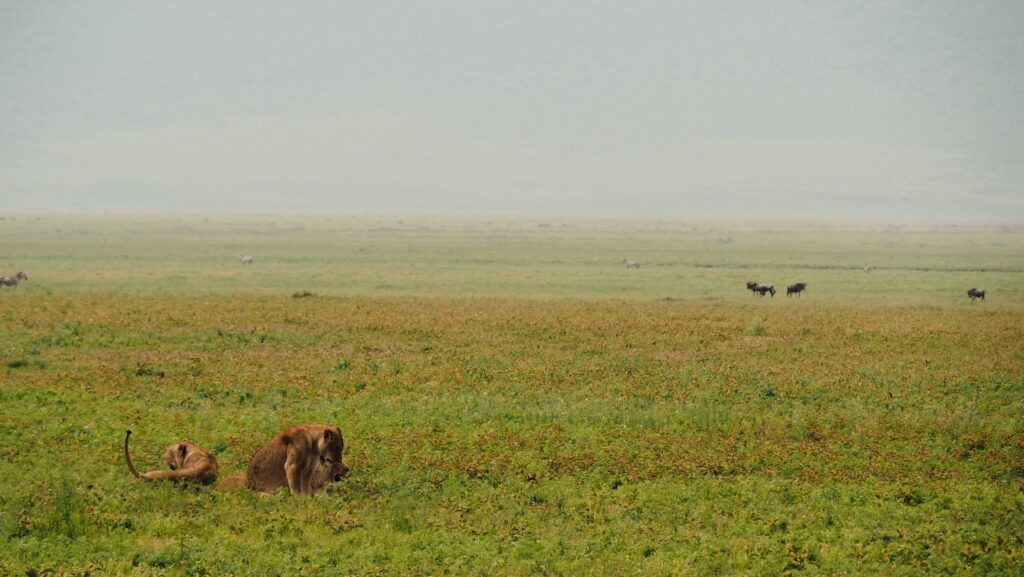

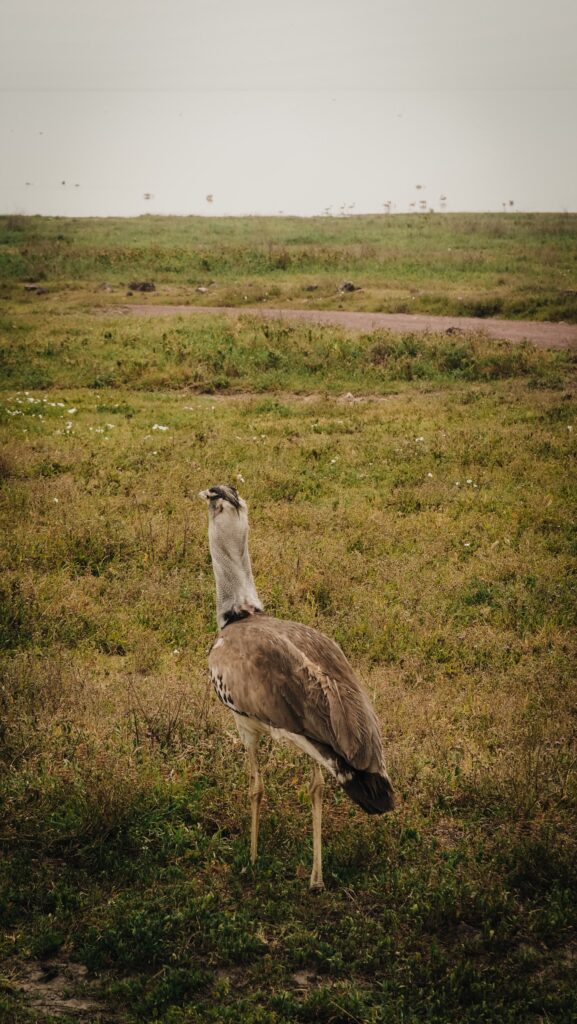
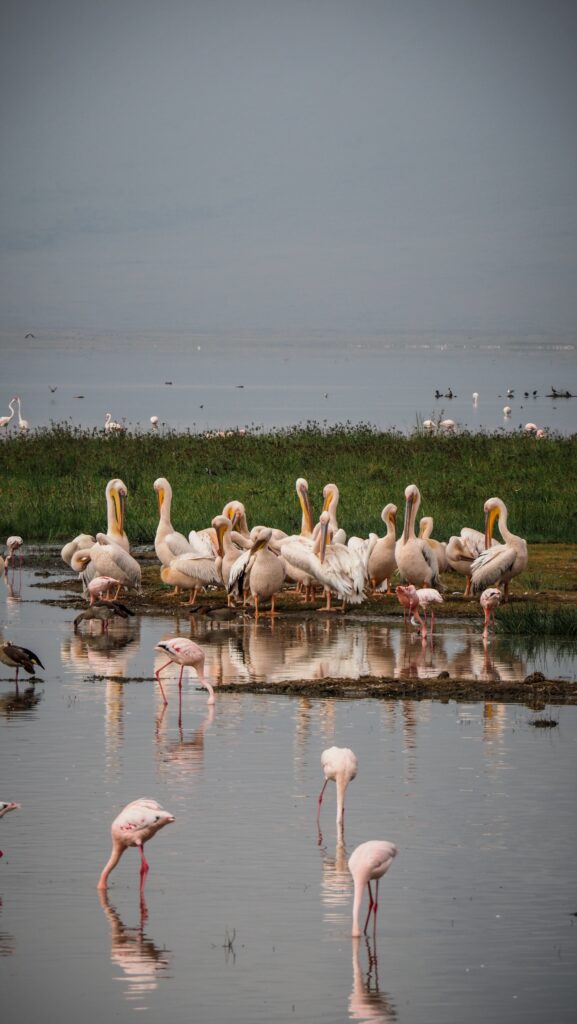
The best time to visit
Best Time for wildlife viewing is June to October (Dry Season).
Animals are easier to spot as they gather around water sources. The weather is cooler and dry, making safaris more comfortable. Roads are in better condition compared to the rainy season. The crater offers great sightings year-round, but predators are more active in dry months.
Best Time for Green Landscapes and Fewer Crowds: November to May (Wet Season)
Lush green scenery with blooming flowers, great for photography. Fewer tourists, so you get a quieter and more intimate safari experience. The calving season (January to March) in the nearby Serengeti attracts predators, making it an exciting time to visit. Birdwatching is excellent, with migratory birds arriving.
When to Avoid
March to May is the peak of the long rains, which can make some roads muddy and harder to navigate. However, Ngorongoro Crater is still accessible year-round.
My experience
After the night at the campsite and filling breakfast, it was time to get into our Land Cruiser and descend into the crater. The only animal from the Big Five that we hadn’t seen was a rhino, so we had high hopes to see one down there!
First, we saw some wildebeests and zebras and then drove further to the lake to have a look at flamingos and hippos. The morning was quite cold and cloudy, but with every minute the sky was clearing up. As we continued our game drive, we encountered elephants, buffaloes, warthogs and quite a few lions, as always lying down without too much movement 🙂 Luckily, there was one which was more active and it was walking along the road just next to safari cars and at one moment it decided to simply lay down near the wheel of a Land Cruiser. Pretty awesome!
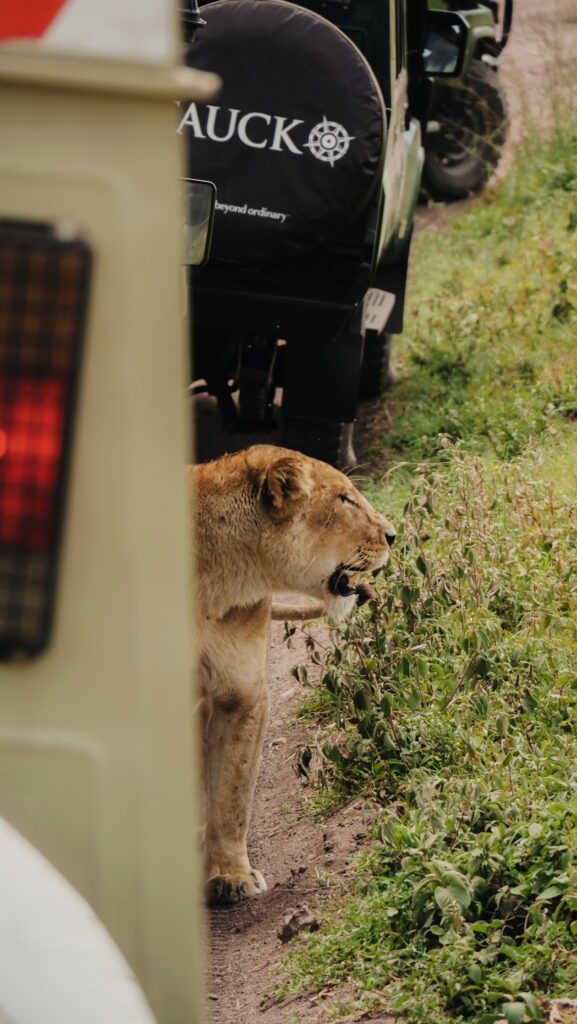
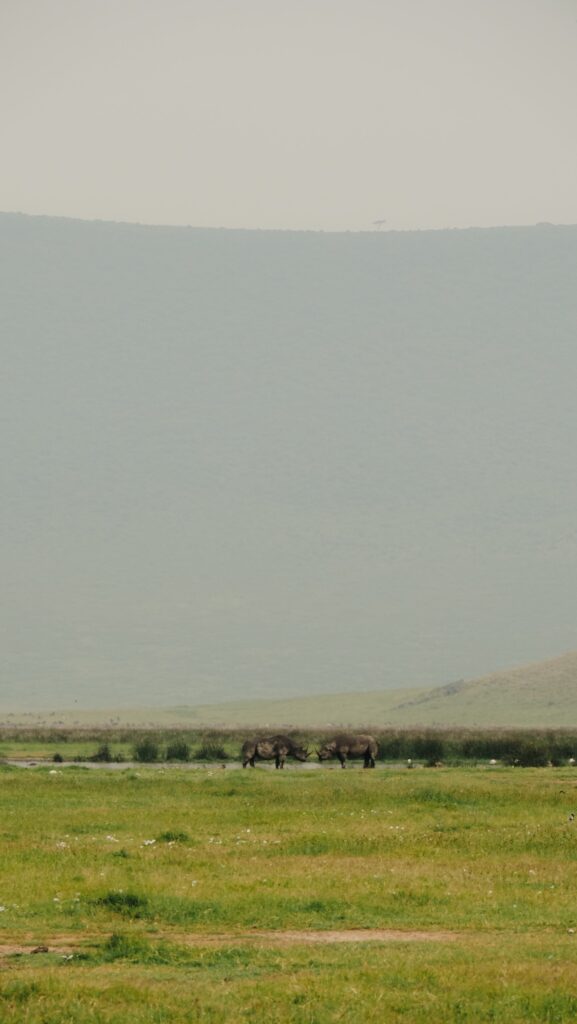
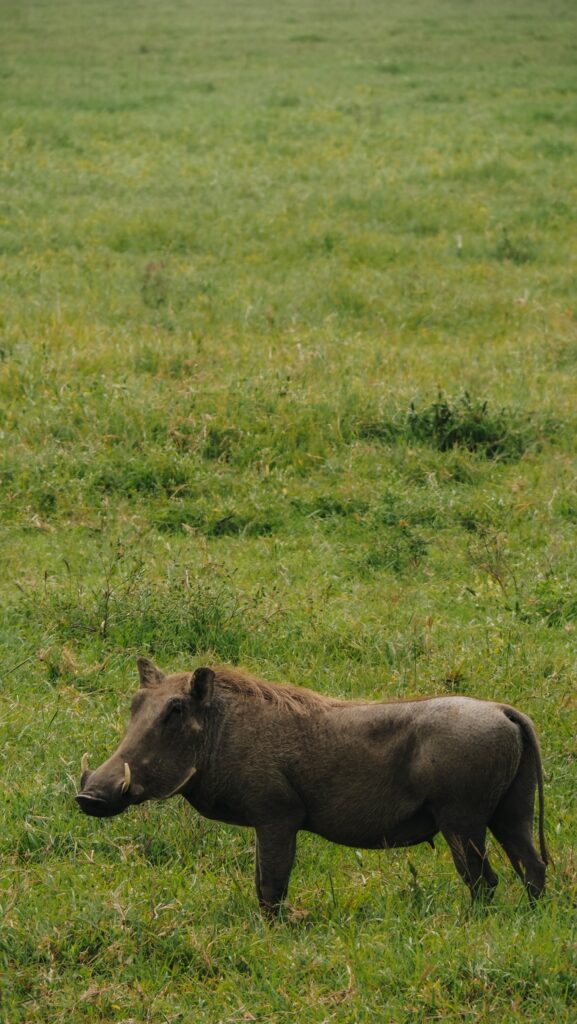
Then, our driver heard on the radio that someone had spotted a rhino, so we rushed to the place. Indeed, two rhinos were standing in front of the small lake, however, the distance was significant and we could see them clearly only through binoculars.
The lunch stop was near the pond with hippos so we could hear them emerging from the water and heavy breathing. Very enjoyable place although the sun was already out and it was getting very hot. Then, we slowly started heading towards the exit. The way out of the crater is different than the way in.
Overall, I would place Ngorongoro Crater in the second place of my favourite places during a 6-day safari, just after the Serengeti. There is something magical in observing the crater from the viewpoint at the rim and then descending to the bottom and seeing all the animals roaming around. A real theatre of life and death!

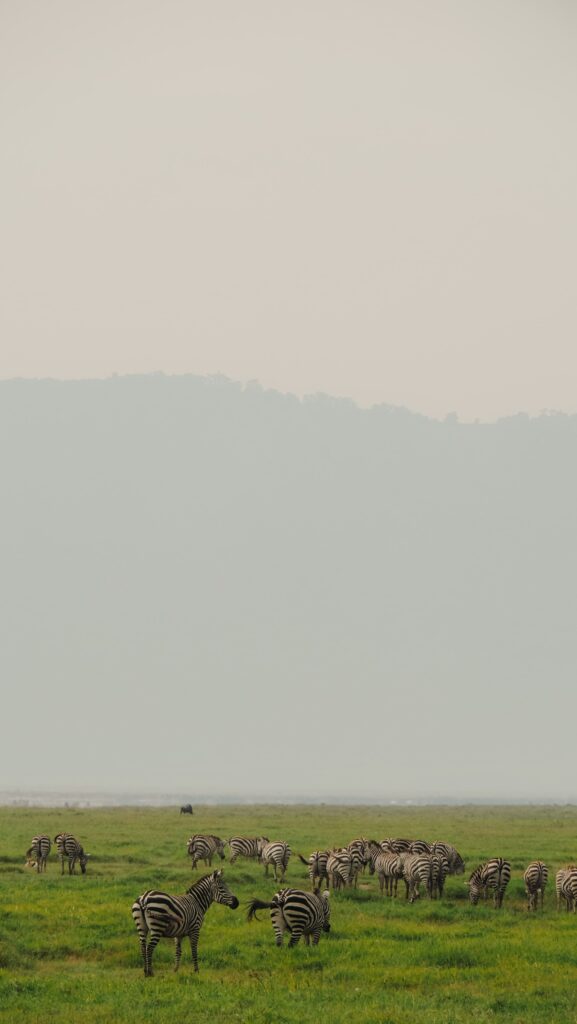

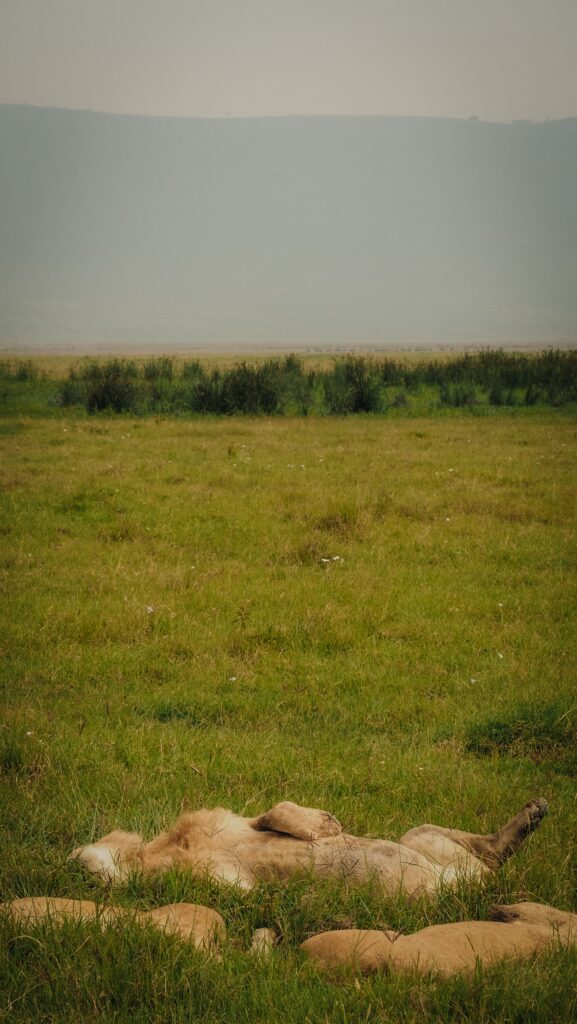
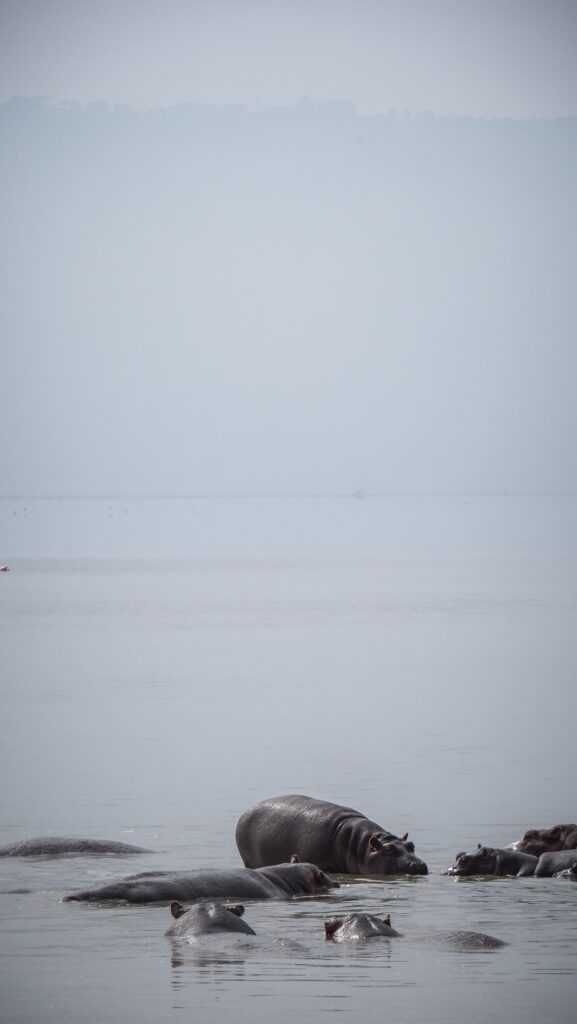
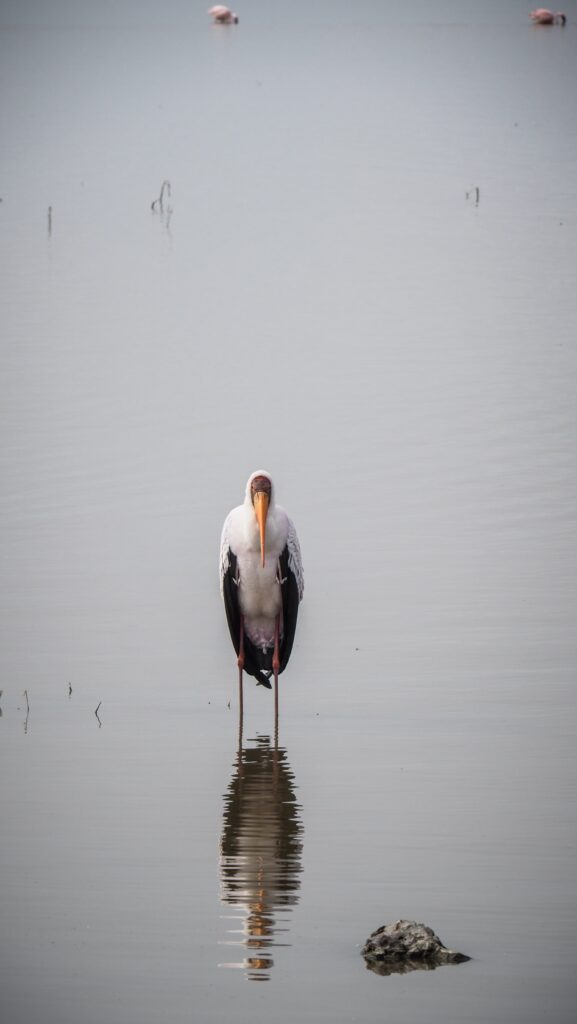
Nearby places worth visiting
Ngorongoro Crater Viewpoint
An obligatory stop before driving down into the crater! The panorama and vastness of the place are simply breathtaking.
Olduvai Gorge and the Museum
One of the world’s most important paleoanthropological sites, often called the “Cradle of Mankind”. It has provided crucial evidence of early human evolution. Archaeologists Louis and Mary Leakey made groundbreaking discoveries here, including fossils of Homo habilis (about 1.9 million years old) and Paranthropus boisei (about 1.8 million years old).
Some of the oldest known stone tools, dating back 1.7 to 2.1 million years, were found in the gorge, showing early human technological advancement. The gorge’s layers reveal a timeline of human evolution over nearly 2 million years, including shifts in climate and environment.
Olduvai Museum displays fossils, tools, and exhibits about early human ancestors. In the area, there are also Shifting Sands, unique crescent-shaped dunes of volcanic ash that move slowly across the plains, as well as Laetoli Footprints, 3.6-million-year-old footprints of early hominins, proving bipedalism.
The museum is a short detour from the main road between Ngorongoro and Serengeti, however, you will need more time if you wish to discover Shifting Sands or Laetoli Footprints.
Olmoti Crater
Olmoti Crater is a shallow, grass-covered volcanic caldera north of the famous Ngorongoro Crater. It is less visited, making it a peaceful spot for those exploring nature on foot.
The crater is covered in lush grasslands and dotted with wildflowers, offering a different landscape from Ngorongoro’s rugged terrain. It has gentle slopes rather than steep crater walls. You may see buffalo, eland, bushbucks, zebras, and various bird species. There are fewer predators, making it safer for walking safaris. The Maasai people graze their cattle in the crater, offering visitors a chance to observe their traditional way of life.
Unlike Ngorongoro, Olmoti is explored on foot. A guided hike (about 30–45 minutes each way) takes you to the crater rim and the Munge Waterfall viewpoint. Visitors must be accompanied by an armed ranger for safety.
Lake Empakaai
Lake Empakaai is a crater lake located within the Ngorongoro Conservation Area. It sits inside the Empakaai Crater, a lesser-known but equally breathtaking volcanic caldera about 40 km northeast of the Ngorongoro Crater. The lake covers most of the crater floor, surrounded by steep, forested cliffs that rise to 300 meters, creating a dramatic and secluded landscape.
The lake has a striking deep blue-green colour, often reflecting the surrounding cliffs and sky. On clear days, you can see as far as Ol Doinyo Lengai, an active volcano, and even Lake Natron. Flamingos are often seen wading in the lake, along with other bird species. You might also spot buffalo, bushbucks, blue monkeys, and even leopards in the surrounding forest.
It is typically accessed via a guided walking safari, starting from the Nainokanoka ranger post. You must be accompanied by an armed ranger. The descent on foot into the crater takes about 30–45 minutes, and the hike back up can be challenging but rewarding.

